1) What was your introduction to the C64?
Back in the beginning and the middle of the 80’s, I was constantly visiting computer shops with shelves filled with home computers, ready to type on them. Lots of 10 PRINT : 20 GOTO 10
testing. I think we all did that back then. There were Spectrum, ZX81, Amstrad, BBC, Oric. You name them. And one day the C64 was there too. I believe the first game I saw on it in a shop was Jumpman.
My dad finally helped me buy it in April 1984. I remember my first few games for it were Omega Race and Return of the Mutant Camels.
2) What interested you in composing for the c64?
I was always keeping a keen ear to the sound chip of the C64 right from the beginning in 1984. I was pausing at the title screens of early games such as those by Interceptor Software with their classical covers, the excellent ADSR in Super Pipeline, and the vibrato in the Ghostbusters chorus.
But it was Rob Hubbard that really magnified this significantly. The first I heard from him was the title tune for Monty on the Run. To me, he was the Newton of the SID chip. Not only revolutionizing the techniques and bringing a lot of new ideas about how to make full use of it, but at the same time also arranging awesome compositions with fascinating solos. Others also had their magnetism, like certainly Martin Galway and his clean and patient sound, but to me, Rob Hubbard was clearly in the lead. He made me want to compose music on the C64 too.
3) So, you say that Rob Hubbard and co was the reason you started composing. Did you try to emulate his or others techniques, sounds or styles into your compositions?
Rarely. I did try to emulate Rob Hubbard for the old player tunes Quick Blast and Ode_to_the_64 but for the most part I wanted to do my own stuff. If I was inspired by others, it was mostly about their sounds.
4) You created your own Music editor. Why? when there were many already out there? Is there advantages to your editor than that over others?
I didn’t like the way they did it. Most of them at that time were all hexadecimal bytes with no direct connection between the voices. I wanted notes, I wanted to visualize the duration, and I wanted the voices to be connected so I could see what was going on. So it was part the general awesomeness of having your own thing combined with clear ideas about how to make it much more WYSIWYG. When the first Soundtracker by Karsten Obarski appeared on the Amiga, I already had similar ideas about how to show and edit it. His layout made me go, Yes, that’s pretty much what I was thinking of!
Only I didn’t want the sequences to glue the voices together.
5) You jointly created the demo group, Vibrants
. What was the thinking behind that?
I actually didn’t want a group at first. Maniacs of Noise had spawned a lot of copycat groups on the C64 with similar words and cadence, and I didn’t want to go me too!
I was fine just being one composer. But I was soon going to a show in London, and Klaus Link
Grøngaard, the first user of my editor, saw the opportunity in seeking C64 developers there and present our music together. And for that, he claimed, we needed to have a group. It all came down in one phone call. At first we discussed why that was really necessary. Then I agreed it was probably best, and we went on to figuring out the name. The only rule I set was that it shouldn’t have the same cadence as Maniacs of Noise. I wanted the name to be as different as possible.
6) In creating Vibrants
. How did this change the way you were working? Did being part of a group open up more avenues to showcase your music?
Apart from having a group where others could join in, we didn’t really exploit it that much. Most members were doing their own things for the demo groups they were part of. Apart from exceptions like Lollypop on PC, we didn’t have a lot of action in games. I’m not sure it would have made much of a difference if Klaus Link
Grøngaard and I never created the group in the first place.
Except maybe for our web site later on. I guess being part of a group came in quite handy there.
7) What are your likes/Dislikes about the SID chip?
Probably the two things that always annoyed me the most about the SID chip was that it didn’t have independent filtering on each voice, and that the filtering differed so much across C64 units.
Luckily, this was more than made up for by the many other features it did have. Pulsating, ADSR, ring modulation, hard sync, various waveforms. Think about what the sound chips in other home computers could do at the time. It wasn’t much.
8) Later, You composed on the PC. What were the differences in composing on these different formats?
I felt I was done with the SID chip in 1992 and needed to try something else. AdLib on the PC was interesting and new; it brought a lot of new things such as 9 voices and building sounds with FM, and I was eager to build a new editor for it. One of the reasons was that I felt AdLib wasn’t utilized as efficiently as it could be. Almost all of the games at that time just used its built-in features for envelope control, FM and vibrato, including all the restrictions this implied. I wanted to bring everything along that I had learned on the C64; real-time modulation, real-time vibrato to avoid the restrictions, arpeggio, sliding, tracker editing, and more.
But it had its disadvantages too. The most annoying was the waiting that had to be done when sending data to the AdLib card. It didn’t even have handshaking, so I had to do a lot of idle delays and that took up a ton of CPU time. Later I got the idea to keep a cluster of all of the registers on the AdLib card and only send new data when it was actually different. That cut down the CPU time, but it was never beautiful
like it was on the C64.
9) If there’s was SID tune that you wish you could claim as your own, What would it be and why?
Oh, there were many. Kentilla and Lightforce by Rob Hubbard comes to mind because of their atmosphere and variety. Robocop 3 and Myth by Jeroen Tel because of their awesome beginnings. The different style and the unique sounds of Ghouls’n’Ghosts by Tim Follin. Martin Galway’s highscore tune for Rambo because of the way he programmed the pulsating.
10) Many former/Current C64 composers have made the step to creating modern music. Some, have gone into the remixing, some even remixing their own work. Is this something you have ever considered?
Not really. I had been playing around on a Korg M1 for a few years in the 90’s, but I was too lazy to learn it properly. I kept playing my own stuff and I felt I confined myself and constantly ran into a wall. Eventually that sensation became so strong that I just gave it up.
11) What would you say are your musical influences?
In my youth, my brother Lars was actually quite dominating in his neighbour room with a loud volume on the records he liked, and it inevitably also affected me. Luckily he did have good taste such as 10CC, The Eagles, Boz Scaggs, Pink Floyd, Dire Straits and a ton more.
When he didn’t get all noisy and I could actually hear my own records, I’d go Lene Lovich, Mike Oldfield, Jean-Michel Jarre - but I never had a library remotely as big as his.
12) You have created the SID resource website DeepSID
. What was the thinking behind that?
The fact that SID rhymes so well with shit
was so obvious that I just had to make up a pun based on it. I went the same way with the SID Happens
folder. You wouldn’t believe the nasty alternatives I discarded before I went with that one.
13) DeepSID is a very useful tool. So much so that remix64 and RKO have started linking to it so people can compare the original SID to the remix. A very useful application too for voters and reviewers. When you created DeepSID could you foresee that it could be utilised in such a way?
DeepSID was started because of a three key decisions and one requirement.
First, I wanted a good web browser as an alternative to the only iOS app that had a user interface I abhorred. Second, when enhancing tamat’s SID visualizer I was annoyed by it not really having a proper file browser, it was just a static list of a few files. I wanted to make my own SID visualizer like it and I felt I had to make this browser part first. And third, I wasn’t impressed with most SID players, both online and offline. I knew this could be done better. So there was the opportunity to make something that could do a lot of things not previously done by a SID player.
The only requirement I demanded was a better SID emulator than the one in the SID visualizer, one that could do digi tunes. I started looking around on the internet but couldn’t find anything at first, and I also seriously doubted I would get lucky. I was this close to giving up on the whole project until I stumbled across Jürgen Wothke’s WebSid emulator.
However, a lot of the stuff you see in DeepSID came in evolutionary steps. It wasn’t actually envisioned as something that would one day have tabs for CSDb, GameBase64, Remix64, scopes, etc. It were good ideas and opportunities that just popped up along the way. Eventually it grew into the Swiss army knife you see today. I’m happy and honoured DeepSID has become a web player used by so many and now also linked to.
14) DeepSID has been improving constantly since its conception with extra detail and features. What are your plans moving forward with the website?
At the moment I’m still taking a pause from developing for it. I was on fire in 2019. One guy even asked me if I was doing time. It has now also become so chock-full of features that I’ve started to become a little wary about pushing more into it. Maybe there is such a thing as too much? Think about ICQ back in the day. I wasn’t too fond of the Christmas tree of options it eventually had.
That being said, I do have a few ideas that I’m toying with in my mind. One of the biggest that I’ve constantly debated with myself is creating a WordPress sub layer that DeepSID could connect to using their API. The front page could become an actual blog with news and articles relating to the SID chip. If possible, the user system in WordPress could be connected with the basic existing user system in DeepSID, so that people logged in could also write WordPress comments and create guest posts with the same login. I can’t see why this wouldn’t be technically possible, but I haven’t really investigated it yet.
And that brings me to Disqus. I’ve always wanted to get rid of it for a long time. It’s a beast that bogs down its tab. It’s slow, requires its own user system, has ads, and a few restrictions I’m not fond about. It never became the frequent nest of comments by users I was hoping for, in spite of being one of the first features I added to DeepSID. If the unification with the user system in WordPress is feasible, it would be great to replace it entirely with a real comments tab. (And then I would have to export the many comments already in Disqus. Sigh!)
But I’ve always been disciplined about writing down even the smallest ideas. You can take a look at my ToDo at Github to see what else I have been pondering.
15) You are not exclusive to the c64, In fact it seems you are a workaholic, if that’s fair to say. For those whom do not know what can you tell us about GameDeed?
GameDeed was a project I started in 2013 to compete with the likes of web sites such as Backloggery and HowLongToBeat. It’s basically a table of games with a combined mini-database in the left side (developer, genre, length, etc.) and the user’s own progress in the right side (completed, abandoned, rating, etc.) plus the ability to open up a row to see a Wikipedia description and a few screenshots. I was very enthusiastic about it in the beginning, but also quickly disappointed that it never really got a proper following. It later hit me that it was probably too overwhelming for first time users. I also suffered from not having a game network. Self-promotion is surprisingly difficult on the internet.
During the years I’ve sometimes contemplated killing the web site after the constant feeling of building a ghost town. For a while I even regret starting it in the first place, but lately I’ve come to appreciate the time spent with it after all. I learned a lot about web development from GameDeed, and DeepSID benefit a lot from that.
DeepSID would never have been nowhere as good without GameDeed.
16) Lastly, Is there anything else you’d like to add?
I would like to thank everyone that has contributed to DeepSID with bugs and features, as well as all those that have uploaded new SID tunes. Creating and maintaining DeepSID has been the positive user experience that GameDeed never quite gave me. I hope to keep the site going for the longest time.
DeepSID has become a very useful tool and i have to thank Jens for his good work. Beacuse of DeepSID it's made reviewing here at remix64 easier as we now link directly to the original music as a reference.
-Neil (Tas)



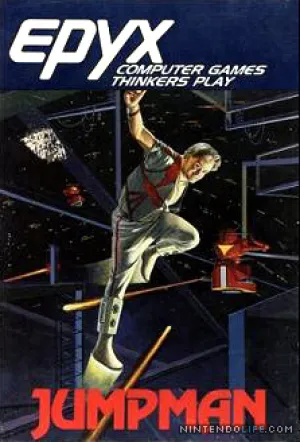
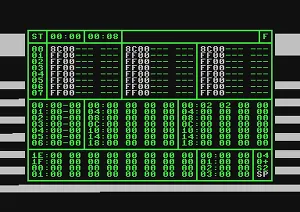
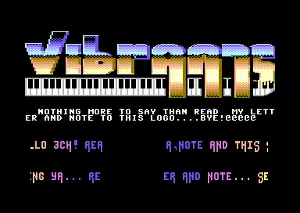
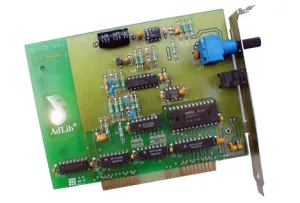
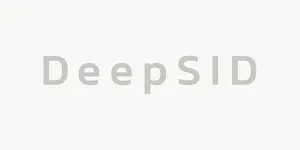











Comments